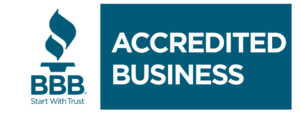Student Loan Forgiveness Programs: PSLF and Paying Down Debt
The costs for higher education have risen exponentially and many people find themselves mired in student loan debt. For people whose financial situation is precarious, having student loan payments of $393 a month (the average payment according to the Federal Reserve) makes meeting ends meet impossible. You may have heard of student loan forgiveness programs or student loan payoffs; you may be considering bankruptcy, and wonder if it will help with your student loan debt. Let’s explore your options.
Student Loan Forgiveness Programs
The Public Service Loan Forgiveness (PSLF) program was created in 2007; participants agree to work in public service jobs for the government and other nonprofit organizations for a period of ten years while making regular monthly payments on their loan. At the end of that time, the remainder of their student loan is forgiven. The reality is that this program has not actually resulted in much student loan forgiveness. In 2019, two years after the first participants became eligible, the Department of Education had approved only 1% of those applying for loan forgiveness. There are a multitude of reasons that applicants were rejected including not filing all yearly Employment Certification Forms needed and loans not being eligible for the program. Only direct student loans are eligible, so if you have consolidated your student loans, you will no longer qualify. Missing or mis-paid monthly payments are another reason for rejection. Basically, doing absolutely everything right under the PSLF program is essential, and if you do one thing wrong, your 10 years of public service and loan payments will be for nought.
Student Loan Payoffs
There are several volunteer organizations that will help in paying down student loans. Volunteers In Service to America (VISTA) will pay off $4,725 for 1700 hours work. That equals 42 ½ weeks of 40 hours a week. Americorps offers the same deal: 12 months of full time work earns you $4,725 off your student loan. The Peace Corps means automatic deferment of Perkins, Stafford or Consolidation loans, but that’s not forgiveness. It also offers partial cancellation of your student loan debt at 15% per year, with a maximum of 70%. So you could work full time for the Peace Corps for nearly 5 years and find yourself still owing 30% of your student loan. Wisconsin does have one state-run program called the Health Professions Loan Assistance Program. The HPLAP seeks to increase the number of primary care, dental, and psychiatrist providers working in underserved rural and urban areas of the state. Participants agree to work full time for three years in a designated area, and can receive up to $50,000 in forgiveness. It is unclear how effective this program actually is in eliminating student loan debt.
Student Loans and Bankruptcy
A casual search of student loan debt in bankruptcy will tell you that you will still be obligated to pay your student loans, even if you file for Chapter 7 bankruptcy. This is false. It requires genuine expertise in bankruptcy law in order to have your student loan debt discharged through bankruptcy, but it can indeed be done. If you can successfully prove undue hardship, your student loan will be completely canceled. Filing for bankruptcy also automatically protects you from collection actions on all of your debts. It’s important that you let your attorney know that you are interested in pursuing the discharge of student loan debt as well. It requires extra paperwork, and the development of a sound strategy. The professionals at Burr Law can advise you about the likelihood of having your student loan debt successfully discharged through bankruptcy.
Student loan forgiveness is real, but it is not easy. You might work with the PSLF program for 10 years and find yourself denied; you can work for nonprofit organizations for 3 to 5 years and hope some or most of your student loan can be cancelled. Or you can meet with the experts at Burr Law and find out whether you could submit a strong case to have your student loan debt discharged in bankruptcy.


